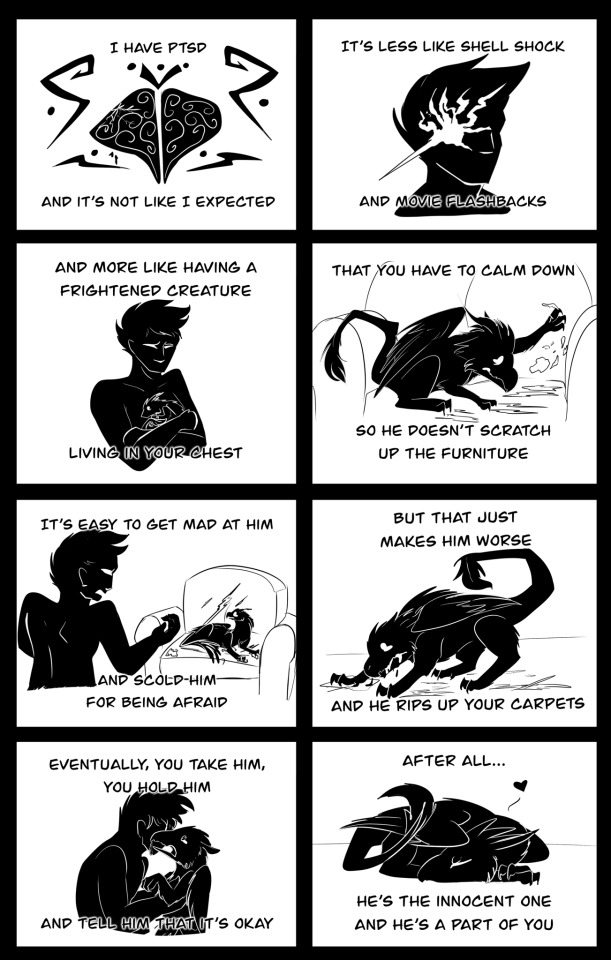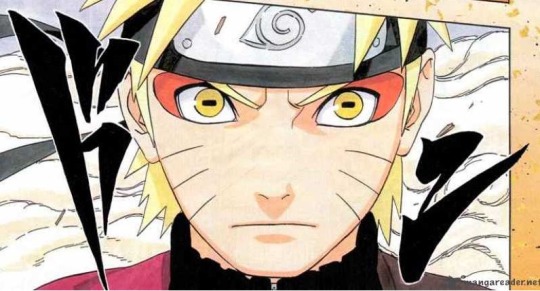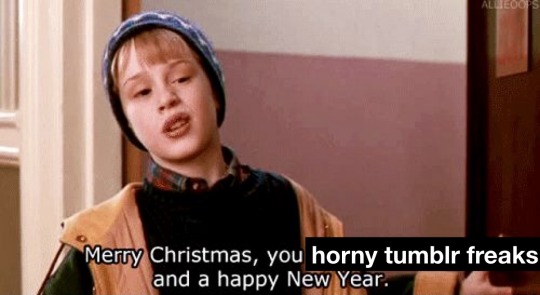Text
"being distressed about an evil thought is what shows you're a good person" = bad, unhelpful, is not at all conducive to OCD recovery
"there's no such thing as a good or bad thought", "your thoughts do not define your morality", etc = good, helpful, acknowledges the fact that thoughtcrime isn't real
remember kids, implying that distress is what makes you a good person is NOT a good way to encourage people to build a life where they are able to learn to live alongside intrusive thoughts
51K notes
·
View notes
Text
I fucking hate having a high pain tolerance I went to urgent care about my back pain and I was like “idk I tore a muscle or something” no I have a FRACTURED SPINE.
3K notes
·
View notes
Text
in a world being slowly imprisoned by growing shackles of infosec and cyber security, the only way to pwn someone is by weaponizing the technology of yesteryear. join the cause and snail mail a picture of goatse to your local senator in an important looking envelope.
20K notes
·
View notes
Text
m/f romance but the guy is a loser and says weird things and is generally pathetic and the girl is badass and possibly possessed by an ancient spirit
3K notes
·
View notes
Text
TERFs really out here thinking that male privilege comes from like. The overwhelming aura of the penis and being told not to wear skirts as a kid, and not the fact that manhood is an in-group that trans women are absolutely stricken from.
33K notes
·
View notes
Text
this may be an Unpopular Opinion (even on tumblr) but like the 8-hour workday is just Too Gotdamn Long
like even sitting in an office for eight hours a day isn’t particularly pleasant (or healthy, as we are beginning to see) but when we’re talking about doing *actual work* for that same amount time it gets pretty fucking brutal
doing literally *anything* (even leisure activities) for eight hours straight tends to be less than enjoyable but when we’re talking about things like construction, landscaping, factory work, and hell, even foodservice and retail, eight hours is a fucking ETERNITY
i might just be a lazy weak-willed bitch but honestly i think i’m not entirely wrong
275K notes
·
View notes
Text

Some thoughts on trauma, healing, and self-forgiveness.
18K notes
·
View notes
Text
I was working on something about fallen angels being exiled to the mortal world and immediately drowning in all the little details of being alive, which could have had an existential tone, except that I had the thought “and one of them is breathtakingly horny about it” so now it’s a comedy
2K notes
·
View notes
Text
Enemies-to-lovers, but instead of featuring a villain redemption arc, the heroic one is getting progressively more corrupt, unhinged and fucked up, and the one who was originally the clear-cut villain out of the two is just like "well mark me down as scared and horny"
68K notes
·
View notes
Text
103K notes
·
View notes
Text
I heard too many sounds at once and now I am a bitch
195K notes
·
View notes
Text
i was so afraid that harry was going to grab for the mastermind role in redemption (i shoulda known better, it's leverage) that the fact that he's just a funky little man that decided he's doing crime now needed a minute to sink in but i LOVE him
he's a whole adult man with a long "honest" career with an entire child and presumably?? no wife? unless she's Way more chill with Harry dumping his job and moving to New Orleans without warning than a regular person would be
and he just. got critiqued by THE sophie devereaux on his one and only theft attempt, which he did in fact research on youtube, almost got saved by THE parker, and then got an assist from the whole leverage team on his escape (you can count getting knocked out by eliot or not)
and he just. wakes up in a lovely little house. with four people talking about whether he needs to die. and then they decide to take down his boss and there's a shed in the back with a dedicated stolen painting cabinet and a different cabinet of forgery materials and an actual legitimate forgery printer and he's like. okay! i guess this is my life now. is somebody going to explain the inside jokes? why yes i would love to try grifting, thank you for asking.
5K notes
·
View notes
Text
I mentioned earlier Kishimoto using body language used in Japanese theatre, so I gathered some pictures to show what I mean.

I have to mention Naruto’s master Jiraiya, whose design, antics and speech are all based on Kabuki. Jiraiya’s rough, broad and bombastic way of speech and body language is a style used in kabuki for masculine, heroic characters. These type of characters take a lot of space and use flamboyant and exaggerated, even aggressive body language.
I have seen a claim that Naruto is the “opposite of traditionally masculine” because he’s flamboyant while Sasuke is traditionally masculine. Sorry but that’s not what Kishimoto was going for:

He draws Naruto in a similar manner to Jiraiya whenever he wants to bring “Kabuki” into Naruto’s character. Notice the crude facial expressions, the face paint and the same, reoccuring hand move.

Jiraiya and Naruto’s sage mode “makeup” is also a nod to the exaggerated face paint used by these hero characters in Kabuki plays. Which is why it makes perfect sense Naruto is wearing the intimidating “hero makeup” when arriving as a hero to save everyone.

So what about Sasuke? Sasuke’s look is more soft, fluid and not exaggerated (including facial expressions). I don’t bother with too many individual pictures so that this doesn’t become too long but Kishimoto spends time portraying Sasuke as poised and graceful in comparison to Naruto’s brash and exaggerated appearance.



Here as well you can see Naruto’s body language being the same type of brash and exaggerated, taking a lot of space, while Sasuke is calm and beautiful and expressionless. . Sasuke is the yin to Naruto’s yang.

But nowhere is Kishimoto’s intention more evident than in this illustration he drew in 2018. Here they are complete opposites. Sasuke’s stance is graceful and closed, his back is straighter and his shoulders are down. Naruto’s is more assertive and open (arrogant). Sasuke is delicate looking, feminine (has some makeup), his build is slightly smaller than Naruto’s (look at the wrists). Sasuke uses the back of his hand to hold back the sleeve, unlike Naruto. Sasuke’s face is smaller and more slender than Naruto’s while Naruto’s features are squarer and not polished. Even the patterns and colors of the kimonos follow. Sasuke’s blue and white symbolise calmness and passivity, Naruto’s colors and patterns symbolise aggression and war (notice the lighting and thunder clouds). The sheer attention to detail!
I don’t think this illustration is much talked in western spaces (?) but in jpn fandom this was definitely noticed and there was some talk about Sasuke’s “feminine aura” when this was released, and that Kishimoto always draws him so beautiful. The contrast between the two of them is interesting, and in my honest opinion ignoring Sasuke’s traditional beauty and grace, as well as Naruto’s brashness, is missing a part of their characters and their relationship.
4K notes
·
View notes
Text
Blind people gesture (and why that’s kind of a big deal)
People who are blind from birth will gesture when they speak. I always like pointing out this fact when I teach classes on gesture, because it gives us an an interesting perspective on how we learn and use gestures. Until now I’ve mostly cited a 1998 paper from Jana Iverson and Susan Goldin-Meadow that analysed the gestures and speech of young blind people. Not only do blind people gesture, but the frequency and types of gestures they use does not appear to differ greatly from how sighted people gesture. If people learn gesture without ever seeing a gesture (and, most likely, never being shown), then there must be something about learning a language that means you get gestures as a bonus.
Blind people will even gesture when talking to other blind people, and sighted people will gesture when speaking on the phone - so we know that people don’t only gesture when they speak to someone who can see their gestures.
Earlier this year a new paper came out that adds to this story. Şeyda Özçalışkan, Ché Lucero and Susan Goldin-Meadow looked at the gestures of blind speakers of Turkish and English, to see if the *way* they gestured was different to sighted speakers of those languages. Some of the sighted speakers were blindfolded and others left able to see their conversation partner.
Turkish and English were chosen, because it has already been established that speakers of those languages consistently gesture differently when talking about videos of items moving. English speakers will be more likely to show the manner (e.g. ‘rolling’ or bouncing’) and trajectory (e.g. ‘left to right’, ‘downwards’) together in one gesture, and Turkish speakers will show these features as two separate gestures. This reflects the fact that English ‘roll down’ is one verbal clause, while in Turkish the equivalent would be yuvarlanarak iniyor, which translates as two verbs ‘rolling descending’.
Since we know that blind people do gesture, Özçalışkan’s team wanted to figure out if they gestured like other speakers of their language. Did the blind Turkish speakers separate the manner and trajectory of their gestures like their verbs? Did English speakers combine them? Of course, the standard methodology of showing videos wouldn’t work with blind participants, so the researchers built three dimensional models of events for people to feel before they discussed them.
The results showed that blind Turkish speakers gesture like their sighted counterparts, and the same for English speakers. All Turkish speakers gestured significantly differently from all English speakers, regardless of sightedness. This means that these particular gestural patterns are something that’s deeply linked to the grammatical properties of a language, and not something that we learn from looking at other speakers.
References
Jana M. Iverson & Susan Goldin-Meadow. 1998. Why people gesture when they speak. Nature, 396(6708), 228-228.
Şeyda Özçalışkan, Ché Lucero and Susan Goldin-Meadow. 2016. Is Seeing Gesture Necessary to Gesture Like a Native Speaker? Psychological Science 27(5) 737–747.
Asli Ozyurek & Sotaro Kita. 1999. Expressing manner and path in English and Turkish: Differences in speech, gesture, and conceptualization. In Twenty-first Annual Conference of the Cognitive Science Society (pp. 507-512). Erlbaum.
84K notes
·
View notes


